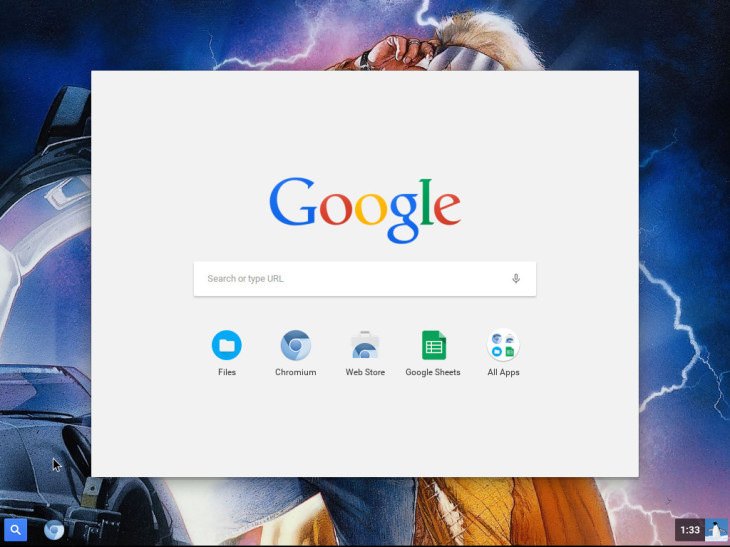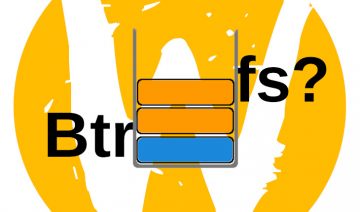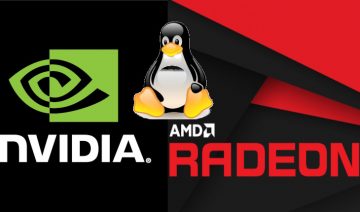Yes, you’ve read it correctly, you can get Google’s Chrome operating system for free, all thanks to a couple of free developments which strives to –
“provide[s] a fast, simple, and more secure computing experience for people who spend most of their time on the web.” ArnoldTheBat
“bring[ing] the best technology to the students and teachers who need it most.” neverware
If you’re the owner of an old computer which is barely running these days, refreshing it with a shiny new Chrome OS might be a reviving shock that will help you put it back to decent use.
Note, despite the above statements, which generally aims at certain groups as the main target audience, the developments in question are actually available to the grand public and not just a specific group.
So, how is it possible you ask? Well, you’re about to find out.
Before we delve into it in more detail, let’s take a moment to understand the current Chrome OS status and how it became that way.
How Chrome OS Became What It Is Today?
At the beginning of the road, when the Google Chrome OS project just started, it was a tiny operating system developed upon an open source project called Chromium OS.
At first, Chrome OS was aimed at being lightweight and fast operating system. It boasted in super speedy boot-time (8 seconds) and in being super-lightweight relative to other major OSs back then.
However, the advantage became a disadvantage when people who expressed their interest in Chrome OS discovered that it was so lightweight it didn’t even supported a local file manager.
Yes, initially, Chrome OS was meant to live on the cloud. Files you wanted to save would be kept on the cloud (on Google Drive for instance).
Apps and programs which are considered basic were actually web-based: office tools such as Google Docs were intended for creating and editing documents, Picasa for viewing photos, the aforementioned Google Drive to keep files, etc…
This turned to be a major turn-off in users eyes who felt, justifiably, insecure about putting all their eggs in one cloudy basket.
Fortunately, Google did not stay indifferent regarding the deteriorating rate of interest in its product and has summoned for a major overhaul to rectify that.
Although staying loyal to the Linux kernel who power its core, other Linux related components, drawn from distributions such as Fedora or Ubuntu, were left out in favor of re-basing Chrome OS on top of Gentoo.
An innovative file manager was developed specifically for the OS. A Taskbar, which was completely missing until then (the entire OS was practically just a Chrome web browser) was integrated along a window manager called Aura.
And in time, the now known Chromebook was introduced which became an inseparable part of the entire Google Chrome OS product.
Evolution Of Chrome OS Alternatives
At some point along the way, there was an avid developer who took upon him the task of building Chrome OS using its Chromium OS source code and releasing it for free to the public.
That developer was known as Hexxeh and his builds (such as the one reviewed here), which were available to all major platforms, have stopped being generated approximately 2.5 years ago.
Of course, apart from Hexxeh, there were other attempts at creating Chrome OS alternatives which aimed to suffice its seekers hunger (Chromixium OS project is one of them).
However, none has turned into a decent, long-lasting replacement that could substitute the Chrome OS experience. At least, not until recent that is.
Which Chrome OS Flavor Do You Prefer?
Recently, a new project called CloudReady by neverware has been launched, bringing you stable builds of Chromium OS for free, plus extended supporting services in return for a nominal fee.
Whereas, at the same time, another option which may have existed a bit longer has also matured and showed resilience in the face of time – ArnoldTheBat‘s builds.
So following is an introduction to both, all you have to do is choose the one which suits you best.
neverware’s CloudReady Builds
neverware supplies you with a decently fresh (currently, only a couple of versions behind Chrome OS) and stable build of Chromium OS, which is practically Google Chrome OS only without the Google branding.
It has a live preview feature – meaning you can write it to a USB stick, plug it to your computer and run it as if it was installed to the hard-drive.
However, to get the most out of it you’ll probably want to install it to your actual hard disk so that you’ll get your hard drive performance which is presumably better than your USB stick, in addition to other benefits you may gain by having it installed.
For those who wish to get a basic experience of Chrome OS, CloudReady seems to be covering it all for free.
However, if you wish to extend your experience beyond the basics – technical support, ability to enroll in Google’s Admin Console, CloudReady also covers that by offering a few more features in a reasonable price.
Among the two options, this one might be considered a bit more beginner friendly since it comes with a click-to-install option built-in out of the box.
ArnoldTheBat’s Builds
Perhaps a little more fresh and “raw“, is the build you can get from Arnold’s repository.
Generally divided into 3 categories, you can get a weekly, daily or a special build based, once again, on Chromium OS source code (Google Chrome OS without the branding).
Opting for this option might get you the latest and greatest, however it may not be is simple to install as CloudReady.
Users who feel they can do without “training wheels” may want to opt for this option in order to get a good sense of the nuts and bolts Chrome OS is comprised of.











